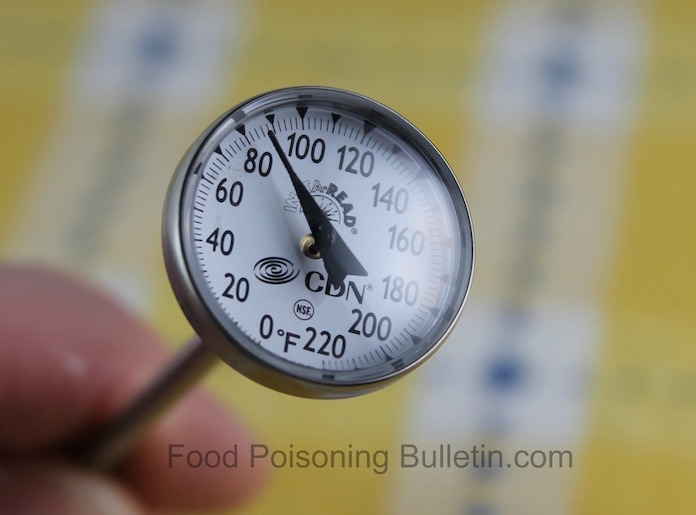A new study published in the British Food Journal has found that most cookbooks give readers poor food safety advice. Researchers looked at 29 cookbooks that have been on the New York Times bestseller list for food and diet books.

Past research has found that poor and incorrect food handling practices can cause foodborne illness, which sickens millions of Americans every year. The study’s purpose was to evaluate communication of food safety guidelines in the books.
The researchers wanted to know if the recipe tells the cook to heat the dish to a specific internal temperature, if it includes a safe final temperature, and if the recipe perpetuates food safety myths. Those myths include cooking poultry until “the juices run clear” or until a hamburger is no longer pink. Other problematic instructions include telling the cook to wash chicken, a method discredited by the USDA as it can aerosolize bacteria and contaminate kitchen surfaces.
Of the 1,749 recipes analyzed, 1,497 continued raw animal products that should be tested with a thermometer before being served. The researchers found that just 123 recipes, or about 8% of the 1,497 analyzed, mentioned cooking the recipe to a specific final endpoint internal temperature. And not all of those temperatures mentioned were high enough to kill pathogenic bacteria. In fact, 34 of those 123 potentially hazardous recipes offered information that wasn’t safe, according to Ben Chapman, associate professor of agricultural and human sciences at North Carolina State University.
The scientists also found that 99.7% of recipes only offered “subjective indicators” to determine doneness. And none of those indicators are a reliable way to tell if a food is safe to eat. Neutral and positive food safety behavior messages were provided in just 7.2% of all of the recipes.
Katrina Levine, lead author of the paper and an extension associated in North Carolina State University’s Department of Agricultural and Human Sciences said, “the most common indicator was cooking time, which appeared in 44 percent of the recipes. And cooking time is particularly unreliable, because so many factors can affect how long it takes to cook something: the size of the dish being cooked, how cold it was before going into the oven, differences in cooking equipment, and so on.”
The cookbooks used other vague indicators, such as “cook until done,” or telling the cook to check the color or texture of meat. Meat, poultry, seafood, and eggs must be cooked until certain precise temperatures are reached. And those temperatures have been established by research and temperatures at which pathogens are destroyed.




